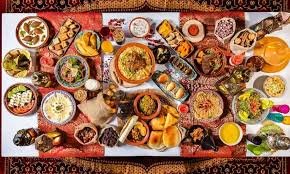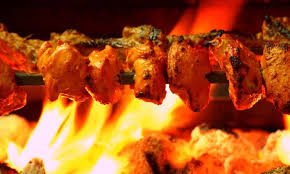
west african food
The Heart and Soul of West African Cuisine
West African food is a dynamic blend of bold flavors, traditional techniques, and deep cultural roots that span thousands of years. Rich in spices, hearty ingredients, and communal values, this cuisine reflects the history, geography, and spirit of the diverse nations across the region. From the savannas of Mali to the coastlines of Ghana and Nigeria, food in West Africa is not just nourishment—it is identity, tradition, and connection. Built on staples like rice, yams, cassava, plantains, and legumes, and elevated with complex seasonings such as ginger, chili, garlic, and fermented spices, West African cuisine delivers depth, richness, and unforgettable taste in every bite. As global interest in African food grows, West African dishes are gaining attention not just for their flavor but for the story and legacy they carry.
Historical Foundations of West African Cuisine
The foundation of West African cuisine is rooted in ancient farming societies, trade empires, and indigenous knowledge. For centuries, the region was home to powerful kingdoms like Mali, Songhai, and Benin, which traded not only gold and salt but also spices, grains, and cooking techniques. Agriculture played a vital role, with early cultivation of millet, sorghum, fonio, and yam. Livestock and fishing supplemented diets in different regions. The trans-Saharan trade routes brought new ingredients such as dates, rice, and spices, while later European colonization introduced items like tomatoes, chili peppers, and maize, which were quickly integrated and transformed into new culinary staples.
Despite colonization and the disruptions of the Atlantic slave trade, West African foodways remained resilient and adaptive. Today, they thrive as a powerful expression of cultural pride and heritage—preserved both in Africa and across the African diaspora.
Core Ingredients in West African Cooking
The strength and identity of West African cuisine lie in its core ingredients, many of which are used daily across countries like Nigeria, Ghana, Senegal, Ivory Coast, and Cameroon:
1. Grains and Starches: Staples include rice, millet, fonio, cassava, yam, and plantains. These are served boiled, mashed, or fried, often as a base for soups and stews.
2. Legumes: Black-eyed peas, cowpeas, and groundnuts (peanuts) are widely used for their protein and versatility.
3. Vegetables: Tomatoes, onions, okra, eggplant, and leafy greens are essential components in many dishes.
4. Spices and Seasonings: Chilies, garlic, ginger, thyme, curry powder, and fermented seasonings like iru (locust beans) add complexity and depth.
5. Palm Oil: This red-hued oil adds richness, color, and a unique earthy taste to many stews and sauces.
6. Proteins: Meat (goat, beef, chicken), dried fish, fresh fish, and seafood are used widely depending on geography.
7. Stock Cubes and Maggi: Though modern, these seasoning cubes are now an almost universal feature in West African kitchens.
Together, these ingredients create a distinct flavor profile—deep, savory, spicy, and often smoky—perfectly suited to communal eating and festive gatherings.
Popular West African Dishes You Must Try
West African cuisine is known for its bold, satisfying, and deeply comforting dishes, often served family-style. Here are some of the most beloved:
1. Jollof Rice: Arguably the most famous West African dish, this tomato-based rice dish is cooked with onions, spices, and sometimes meat or vegetables. Nigeria and Ghana are famously competitive over who makes it best.
2. Egusi Soup: Made from ground melon seeds, spinach or bitterleaf, and a mix of meats or fish, this thick stew is often paired with pounded yam or fufu.
3. Fufu: A starchy side dish made from cassava, yam, or plantain, pounded until soft and stretchy. It is used to scoop up soups and stews by hand.
4. Suya: A spicy grilled meat skewer, coated in a dry rub of peanuts and chili. It is a popular street food in Nigeria and neighboring countries.
5. Peanut (Groundnut) Stew: A creamy, spicy stew made with ground peanuts, tomatoes, garlic, and protein—served with rice or couscous.
6. Waakye: A Ghanaian rice-and-bean dish cooked with dried millet leaves, served with eggs, fish, spaghetti, and pepper sauce.
7. Yassa: A Senegalese dish of marinated onions and lemon over grilled chicken or fish. Served with fluffy white rice.
8. Moi Moi: A steamed bean pudding made from pureed black-eyed peas, onions, and peppers. Nutritious and often served as a side.
Each dish has local variations depending on the country or ethnic group, but the foundation of flavor and family remains constant throughout.
Cooking Techniques Passed Down Through Generations
West African cooking relies on time-honored techniques, many of which are passed down through families without written recipes:
1. Open Fire Cooking: Many dishes are traditionally cooked over wood fires, giving them a smoky, earthy flavor.
2. Stewing and Simmering: Stews are cooked low and slow, allowing flavors to develop fully—often over several hours.
3. Frying: Plantains, akara (bean fritters), and meats are often fried in palm oil or groundnut oil.
4. Pounding: Creating fufu or pounded yam involves labor-intensive pounding in large wooden mortars.
5. Blending and Grinding: Fresh spice blends are ground using stone mills or mortar and pestle, enhancing aroma and authenticity.
6. Fermentation: Ingredients like dawadawa (fermented locust beans) or kenkey (fermented corn dough) are common in regional flavoring.
These techniques preserve not just the taste of West Africa, but also the rhythms of daily life, family bonding, and cultural pride.
Regional Diversity Within West African Cuisine
While the region shares many ingredients and influences, West African cuisine is incredibly diverse. A few regional distinctions include:
- Nigeria: Known for spicy soups like egusi, ogbono, and pepper soup, as well as jollof rice, suya, and akara.
- Ghana: Famous for waakye, banku (fermented maize dough), and kelewele (spiced fried plantains).
- Senegal: Home of thieboudienne (fish and rice), yassa, and peanut stew. Senegalese cuisine is heavily influenced by French and Islamic traditions.
- Ivory Coast: Noted for attiéké (cassava couscous) and grilled fish or chicken with spicy sauces.
- Sierra Leone and Liberia: Rice is king, often served with palava sauce, cassava leaves, or groundnut soup.
- Mali and Burkina Faso: Millet and sorghum dominate here, with simpler, grain-based meals and brothy sauces.
Despite political borders, food traditions often cross cultures and tribes, creating a culinary map based on taste and tradition rather than geography.
Health and Nutrition in Traditional West African Foods
Traditional West African food is rich in whole foods, plant-based ingredients, and balanced nutrition. Prior to the modern introduction of processed foods, diets were low in sugar, artificial fats, and sodium. Key health benefits include:
- High fiber intake from vegetables, beans, and whole grains
- Healthy fats from groundnuts, seeds, and occasional palm oil
- Protein-rich meals through legumes, fish, and small portions of meat
- Natural fermentation, which promotes gut health
- Antioxidant-rich spices like turmeric, ginger, and chili
However, modern challenges such as urbanization, western food imports, and sedentary lifestyles have led to rising concerns about diabetes and hypertension. Chefs and health advocates are now working to promote nutritional awareness while preserving the cultural essence of traditional food.
West African Food in the Diaspora
Due to the Atlantic slave trade, millions of West Africans were forcibly relocated across the Americas and Caribbean—bringing their cooking traditions with them. Many modern dishes in the U.S., Brazil, and Caribbean nations have direct roots in West African food:
- Gumbo and Jambalaya (U.S.): Influenced by okra stews and rice dishes from Africa
- Feijoada (Brazil): Related to West African bean stews
- Callaloo and Pepper Pot (Caribbean): Similar to traditional green stews from the region
Today, second and third-generation African diaspora communities are reclaiming and celebrating their culinary heritage. African restaurants in the U.S. and Europe are rising in popularity, and West African chefs are being recognized on global platforms like Netflix, YouTube, and culinary magazines.
Conclusion: The Living Legacy of West African Food
West African food is more than delicious—it is a living history, a cultural identity, and a testament to resilience. Through its vibrant spices, humble ingredients, and heartfelt preparation, it tells stories of migration, adaptation, and celebration. As the world begins to appreciate African cuisines more deeply, West African dishes stand proudly as ambassadors of a region rich in tradition and soul. Whether it’s a pot of simmering jollof, a scoop of creamy groundnut stew, or a bite of grilled suya, each taste invites us into a world where food is family, culture, and legacy—served one plate at a time.






